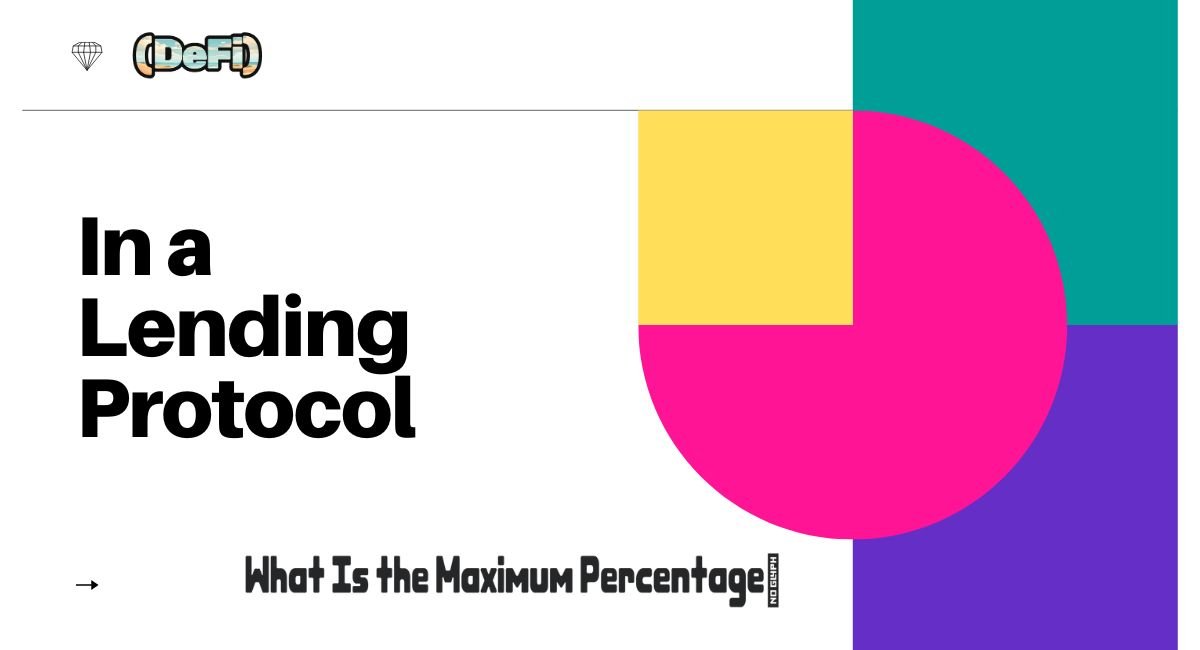In the realm of decentralized finance (DeFi), lending protocol play a crucial role in facilitating borrowing and lending activities without the need for traditional financial intermediaries. These protocols are built on blockchain technology and utilize smart contracts to manage the terms of loans, interest rates, and collateral requirements. A key aspect that borrowers and lenders must understand within these protocols is the maximum percentage one can borrow against their collateral. This percentage, often referred to as the Loan-to-Value (LTV) ratio, is a critical factor that influences the risk and security of the loan.
Understanding the Loan-to-Value (LTV) Ratio
The Loan-to-Value (LTV) ratio is a metric used by lending protocol to determine the maximum loan amount a borrower can obtain relative to the value of the collateral they provide. In simpler terms, it is the percentage of the collateral’s value that can be borrowed. For example, if a protocol offers an LTV of 75%, a borrower can take out a loan worth up to 75% of the value of their collateral.
Significance of the LTV Ratio
The LTV ratio is pivotal in managing the risk for both the borrower and the lender. A higher LTV allows the borrower to obtain more funds but also increases the risk of liquidation if the value of the collateral falls. Conversely, a lower LTV offers more security for the lender, as there is a larger cushion in case of a decline in collateral value.
Factors Influencing the Maximum Percentage in Lending Protocols
1. Collateral Type and Volatility
Different assets have varying levels of volatility, and lending protocols adjust their maximum percentage based on the type of collateral. For example, stablecoins like USDC or DAI typically have a higher LTV ratio compared to more volatile assets like Bitcoin or Ethereum. This is because the value of stablecoins remains relatively constant, reducing the risk for lenders.
2. Protocol Risk Management Strategies
Lending protocols implement strict risk management strategies to safeguard against market fluctuations and defaults. These strategies often include setting conservative LTV ratios, especially for high-risk assets. Additionally, protocols may adjust LTV ratios dynamically based on market conditions, ensuring the system remains robust against potential market downturns.
3. Borrower’s Profile and Creditworthiness
In some advanced lending protocols, the borrower’s creditworthiness may also influence the maximum percentage. For instance, protocols that incorporate decentralized credit scores may offer higher LTV ratios to borrowers with a strong repayment history and lower to those with less favorable records.
Examples of LTV Ratios in Popular Lending Protocols
To better understand the LTV ratios across different platforms, here’s a comparative table:
| Lending Protocol | Asset | LTV Ratio | Collateral Type |
| Aave | ETH | 75% | Cryptocurrency |
| Aave | LINK | 60% | Cryptocurrency |
| Compound | Stablecoins | 85% | Stablecoins |
| Compound | Volatile Assets | 50-60% | Cryptocurrency |
| MakerDAO | ETH | 66.7% | Cryptocurrency |
Risks and Considerations in High LTV Lending
1. Liquidation Risk
One of the most significant risks associated with high LTV ratios is liquidation. If the value of the collateral drops below a certain threshold, the protocol may liquidate the collateral to repay the loan. This is done automatically via smart contracts, ensuring the protocol’s solvency but potentially leading to losses for the borrower.
2. Interest Rate Sensitivity
High LTV ratios are often accompanied by higher interest rates. This is due to the increased risk the lender takes on by allowing the borrower to access more funds relative to their collateral. Borrowers must be aware of this and calculate the cost of borrowing carefully to avoid unsustainable debt.
3. Market Volatility
In a volatile market, the value of collateral can swing dramatically, putting loans with high LTV ratios at greater risk of liquidation. Borrowers need to monitor their positions closely and be prepared to add more collateral or repay part of the loan to avoid liquidation during market downturns.
Strategies to Manage LTV Risks
1. Over-Collateralization
One effective strategy to mitigate the risks of high LTV ratios is over-collateralization. By providing more collateral than the minimum required, borrowers can reduce the risk of liquidation and increase their chances of maintaining their loan even in volatile markets.
2. Regular Monitoring and Rebalancing
Borrowers should actively monitor the value of their collateral and the LTV ratio. If the market moves against their position, rebalancing by adding more collateral or partially repaying the loan can prevent liquidation.
3. Using Stablecoins as Collateral
For those concerned about volatility, using stablecoins as collateral is a prudent choice. Stablecoins maintain their value more consistently, reducing the risks associated with market fluctuations and allowing for higher LTV ratios without increasing liquidation risk.
Conclusion
Understanding the maximum percentage or LTV ratio in lending protocol is crucial for anyone participating in DeFi. It’s a delicate balance between maximizing borrowing power and managing risk. By choosing the right collateral, keeping an eye on market conditions, and employing sound risk management strategies, borrowers can navigate these protocols effectively, ensuring their financial stability while optimizing their borrowing potential.
Read Our More Blogs:-
